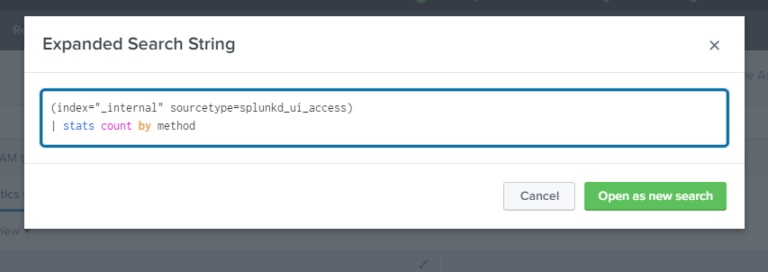
Replay any dataset to Splunk Enterprise by using our replay.py tool or the UI. The Splunk App for Unix and Linux includes a variety of search macros that can be used to create custom searches and notable events. Initial Confidence and Impact is set by the analytic author. The Risk Score is calculated by the following formula: Risk Score = (Impact * Confidence/100).
#Splunk rex in macro update#
As these are identified, update rare_process_allow_list_local.csv to filter them out of your search results.

Some legitimate processes may be only rarely executed in your environment. The Edge Processor solution, which uses the rex command, supports Regular Expression 2 (RE2) syntax instead of PCRE syntax.
#Splunk rex in macro pdf#
You can modify the limit parameter and search scheduling to better suit your environment. Documentation Splunk Cloud Services SPL2 Search Reference rex command usage Download topic as PDF rex command usage SPL2 supports perl-compatible regular expressions (PCRE) for regular expressions. Step1: Go to setting>advanced search>search. The rex command matches the value of the specified field against the unanchored regular expression and extracts the named groups into fields of the corresponding names. Search Macro Without Argument Normal SPL query or a chunk of a query. the last Module Course Objectives : Module 1 - Splunk Introduction Module 2. I’ll provide plenty of examples with actual SPL queries. extracting fields using REX, creating tags and eventtypes, using macros. If you wish to remove an entry from the default lookup file, you will have to modify the macro itself to set the allow_list value for that process to false. Use this command to either extract fields using regular expression named groups, or replace or substitute characters in a field using sed expressions. In this article, I’ll explain how you can extract fields using Splunk SPL’s rex command. To add your own processes to the allow list, add them to rare_process_allow_list_local.csv. The (2) indicates that the macro contains two arguments. Click New Search Macro to create a new search macro. Select Settings > Advanced Search > Search Macros. These consist of rare_process_allow_list_default.csv and rare_process_allow_list_local.csv. The following example demonstrates search macro argument validation. The macro filter_rare_process_allow_list searches two lookup files for allowed processes.

To successfully implement this search, you must be ingesting data that records process activity from your hosts and populating the Endpoint data model with the resultant dataset.


List of fields required to use this analytic. It allows the user to filter out any results (false positives) without editing the SPL. | rename Processes.process_name as processĭetect_rare_executables_filter is a empty macro by default. LOG_LEVEL="INFO" MESSAGE="Type_of_Call = Sample Call LOB = F Date/Time_Stamp = T21:10:53.| tstats `security_content_summariesonly` count values(st) as dest values(er) as user min(_time) as firstTime max(_time) as lastTime from datamodel=Endpoint.Processes by Processes.process_name Please note that in the cases like whitelisting indexes for CIM or other such app. I am trying to extract few fields from an event log using rex command and display the fields in a tabular format. More often than not, you will have macro already available from the app (ESCU/SSE/ES), all you need to do is update the parameters from Settings -> Advance Search -> Search macros -> Select Macro and update the same.


 0 kommentar(er)
0 kommentar(er)
